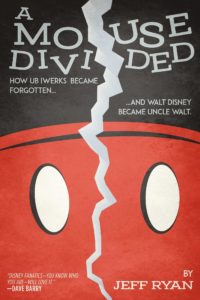 My husband and I are three-time greyhound adopters, and we said a sad farewell to our last hound in March. Lahni was nearly thirteen years old, and was the hardest luck case in our bunch. She had been adopted out, then returned to the agency about nine months later. Upon inquiring why, we learned she hadn’t done well being on her own during the day. Once back at the agency she was allowed to roam free in the hall because she wouldn’t tolerate being crated. Lahni had languished for over a year in this state of limbo while other dogs with fewer issues came and went.
My husband and I are three-time greyhound adopters, and we said a sad farewell to our last hound in March. Lahni was nearly thirteen years old, and was the hardest luck case in our bunch. She had been adopted out, then returned to the agency about nine months later. Upon inquiring why, we learned she hadn’t done well being on her own during the day. Once back at the agency she was allowed to roam free in the hall because she wouldn’t tolerate being crated. Lahni had languished for over a year in this state of limbo while other dogs with fewer issues came and went.
We had actually been to this place on several occasions to meet and walk different dogs, following the heartbreaking loss of our first greyhound, Abby. We were determined to hold out on adopting again until we felt the same magic spark we’d experienced with her. Unfortunately, none of the candidates had stood out for us. One day after another failed attempt, we offered to walk Lahni. She wasn’t a consideration for us given her anxiety issues, but she looked like she could use a change of scenery.
Outside the confines of the kennel, a whole new dog emerged. She was in her glory! She had a jaunty little bounce to her step, sighting on everything that moved and with ears constantly perked up at attention, while her nose sniffed the breeze and then, every few feet, the ground. While I’m at it, I might as well mention that she had the largest ears I’ve ever seen on a greyhound. If I didn’t have the National Greyhound Association registration with her pedigree I might wonder if she was actually a purebred greyhound, owing to those elephantine antennae. But I digress. Her transformation on our walk was remarkable. While the other dogs had dutifully gone along with us, this one was on a mission. When we eventually turned back, she was crestfallen, and her pace slowed considerably.
As we made our way back we considered the situation anew. Yes, she had issues and might take some work. However it was beginning to dawn on us that we could look for the rest of our lives and never find another Abby. Lahni could also be waiting the rest of her life for someone. Maybe we should be thinking about something new: giving back. While they’d warned us about her anxiety being alone during the day, we secretly wondered if maybe the former adopter or environment just hadn’t been a good match. (When I later recalled this notion, I had a great laugh at my own expense – oh the hubris!)
We decided to go for it, and the adventure began. After an unsettling week or so during which we’d regularly come home to find Lahni had been sick to her stomach while we were at work, we took her to the vet. Following a series of expensive tests that showed nothing was wrong, the vet gave it to us straight: She needs company. Which is how we found ourselves in the hitherto unimaginable position of getting a dog for our dog. Back to the agency we went, and as luck would have it on that day, there was a new arrival. A brindle, like our first, but that is where the similarity ended. This one stared at us, wide-eyed, unmoving. As I crouched in front of her, looking into those unblinking eyes, I felt there was someone in there, waiting to be set free. And do you know what? There was. But that’s another story.
Lahni was a new dog once she had company. While she never did warm to me as much as she did my husband, we were able to give her a good life with lots of walks. With the addition of two greyhounds, our formerly carefree days became more complicated, expensive, and sometimes even circus-like, but mainly joyful and never boring. Now that they are gone, the quietude of our home feels less like peace and more like loneliness. Although we likely have not owned our last greyhound, we are taking a moment to regroup. It is difficult for us to wait, but easier on our would-be dog, given current schedules.
This lonely, dog-free time in our lives is no doubt what had me reaching for The Dog Stays in the Picture: Life Lessons from a Rescued Greyhound, by Susan Morse. She decides to adopt a retired racer as her last two teens head off to college. This choice disrupts the plans she and her husband have for entering their liberated, empty nest years. Although this didn’t really scratch my itch for a dog-lover’s read I kept at it, in part comforted by the knowledge that I wasn’t the only person to be tolerated by a greyhound while a spouse is adored. In spite of the title, the book is more of a general memoir; stories about the challenges of adopting a greyhound are woven together with past and present reflections on her college-bound children, traveling-for-work actor husband and even a health crisis. And perhaps that is the point: making room for this singular breed in a life underway takes a little bit of doing, but will pay you back. Given the absolute lack of real-world context for dogs who have only known a racetrack environment, their general confusion is understandable (what is my purpose here?) As is their inexperience with practical concerns such as stairs (how do they work?) and glass doors (solid). The foibles Morse describes are familiar and perhaps even endearing to me.
National Adopt-a-Greyhound month is in April, and although the agencies we used when adopting are now defunct, there are numerous others still working to find homes for retired racing greyhounds. Visit the Greyhound Project website for a directory of agencies and other resources. To learn more about the breed, check out Cynthia Branigan’s Adopting the Racing Greyhound, or Retired Racing Greyhounds for Dummies, by Lee Livingood.
Kirstie David is the Literacy/Outreach Librarian at the Morrill Memorial Library in Norwood, MA. Look for her article in the January 16, 2020 issue of the Transcript and Bulletin.



